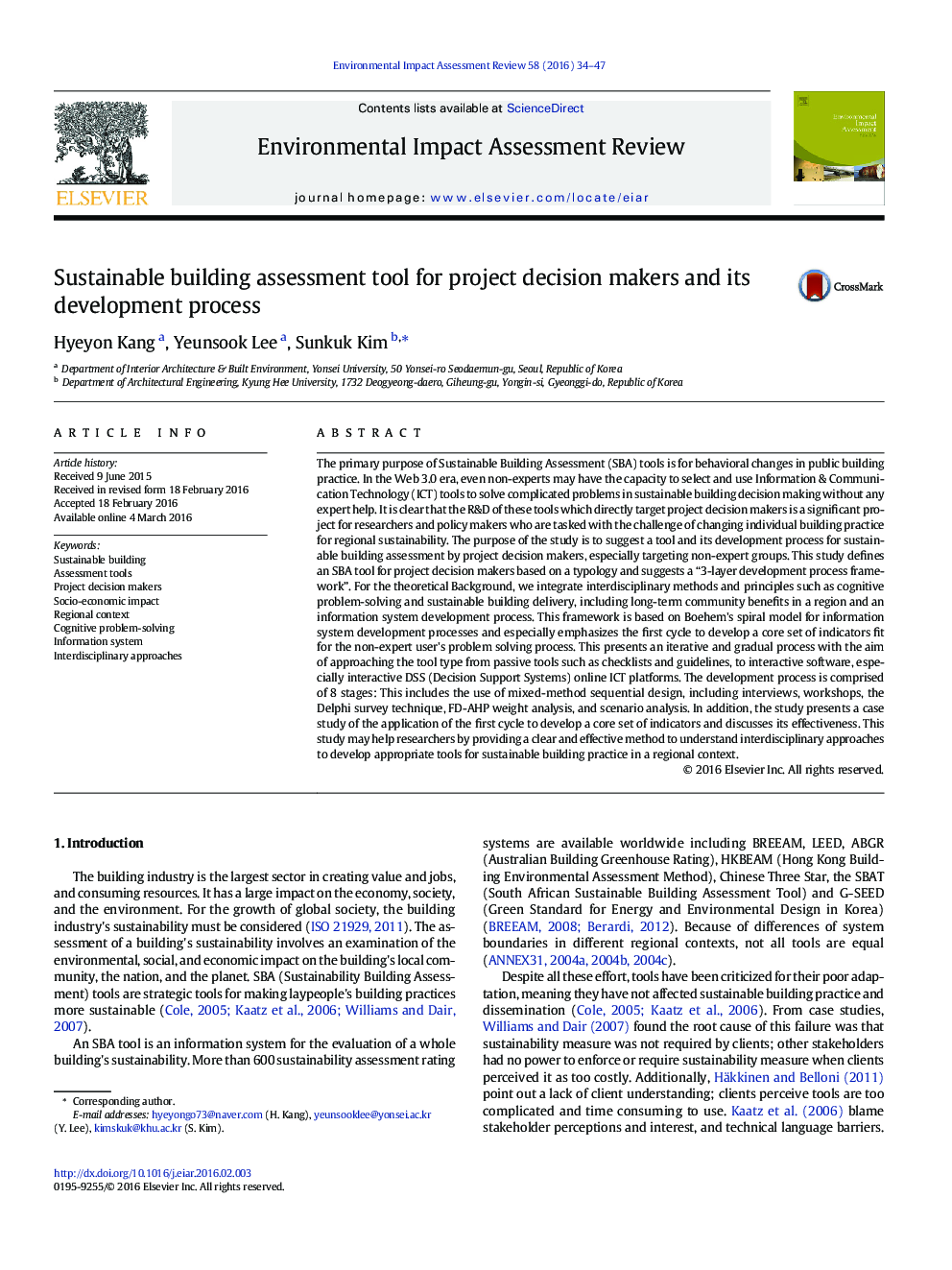| Article ID | Journal | Published Year | Pages | File Type |
|---|---|---|---|---|
| 1052664 | Environmental Impact Assessment Review | 2016 | 14 Pages |
•Reviewed literature on cognitive problem-solving, sustainable building delivery and information system development•An SBA tool for non-expert group is defined based on new topology.•“3-layer development process framework” emphasizes the first cycle of a core set of indicators.•Iterative and gradual process is for approaching finally to interactive software.•Optimized methods can be a roadmap to develop tools systematically with a long-term perspective.
The primary purpose of Sustainable Building Assessment (SBA) tools is for behavioral changes in public building practice. In the Web 3.0 era, even non-experts may have the capacity to select and use Information & Communication Technology (ICT) tools to solve complicated problems in sustainable building decision making without any expert help. It is clear that the R&D of these tools which directly target project decision makers is a significant project for researchers and policy makers who are tasked with the challenge of changing individual building practice for regional sustainability. The purpose of the study is to suggest a tool and its development process for sustainable building assessment by project decision makers, especially targeting non-expert groups. This study defines an SBA tool for project decision makers based on a typology and suggests a “3-layer development process framework”. For the theoretical Background, we integrate interdisciplinary methods and principles such as cognitive problem-solving and sustainable building delivery, including long-term community benefits in a region and an information system development process. This framework is based on Boehem's spiral model for information system development processes and especially emphasizes the first cycle to develop a core set of indicators fit for the non-expert user's problem solving process. This presents an iterative and gradual process with the aim of approaching the tool type from passive tools such as checklists and guidelines, to interactive software, especially interactive DSS (Decision Support Systems) online ICT platforms. The development process is comprised of 8 stages: This includes the use of mixed-method sequential design, including interviews, workshops, the Delphi survey technique, FD-AHP weight analysis, and scenario analysis. In addition, the study presents a case study of the application of the first cycle to develop a core set of indicators and discusses its effectiveness. This study may help researchers by providing a clear and effective method to understand interdisciplinary approaches to develop appropriate tools for sustainable building practice in a regional context.
Graphical abstractFigure optionsDownload full-size imageDownload as PowerPoint slide
